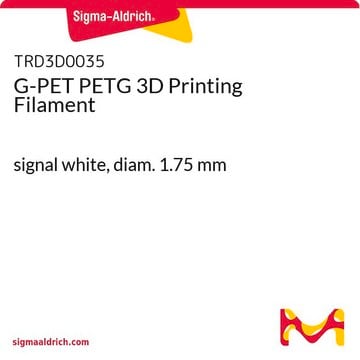W504505
(S)-(−)-Limonene
≥95%, FG
Sinónimos:
(−)-p-Mentha-1,8-diene, (−)-Carvene, (S)-4-Isopropenyl-1-methyl cyclohexene
About This Item
Productos recomendados
biological source
synthetic
Quality Level
grade
FG
Kosher
reg. compliance
EU Regulation 1334/2008 & 178/2002
FDA 21 CFR 182.60
vapor density
4.7 (vs air)
vapor pressure
<3 mmHg ( 14.4 °C)
1 mmHg ( 20 °C)
assay
≥95%
optical activity
[α]20/D −90 to -61°, neat (angular)
expl. lim.
6.1 %
refractive index
n20/D 1.471 (lit.)
bp
175-177 °C (lit.)
density
0.844 g/mL at 25 °C (lit.)
application(s)
flavors and fragrances
documentation
see Safety & Documentation for available documents
food allergen
no known allergens
organoleptic
camphoraceous; herbaceous; pine
SMILES string
CC(=C)[C@H]1CCC(C)=CC1
InChI
1S/C10H16/c1-8(2)10-6-4-9(3)5-7-10/h4,10H,1,5-7H2,2-3H3/t10-/m1/s1
InChI key
XMGQYMWWDOXHJM-SNVBAGLBSA-N
¿Está buscando productos similares? Visita Guía de comparación de productos
General description
Application
- Efficient production of (S)-limonene and geraniol in Saccharomyces cerevisiae through the utilization of an Erg20 mutant with enhanced GPP accumulation capability.: This study highlights a metabolic engineering approach to enhance the production of (S)-limonene and geraniol in yeast, offering potential for scalable biosynthesis of these valuable compounds (Bernard et al., 2024).
- The behavioral sensitivity of mice to acyclic, monocyclic, and bicyclic monoterpenes.: This research investigates the effects of various terpenes including (S)-limonene on mice behavior, providing insights into potential therapeutic applications (Williams et al., 2024).
signalword
Danger
hcodes
Hazard Classifications
Aquatic Acute 1 - Aquatic Chronic 1 - Asp. Tox. 1 - Flam. Liq. 3 - Skin Irrit. 2 - Skin Sens. 1B
Storage Class
3 - Flammable liquids
wgk_germany
WGK 2
flash_point_f
123.8 °F - closed cup
flash_point_c
51 °C - closed cup
ppe
Eyeshields, Faceshields, Gloves, type ABEK (EN14387) respirator filter
Certificados de análisis (COA)
Busque Certificados de análisis (COA) introduciendo el número de lote del producto. Los números de lote se encuentran en la etiqueta del producto después de las palabras «Lot» o «Batch»
¿Ya tiene este producto?
Encuentre la documentación para los productos que ha comprado recientemente en la Biblioteca de documentos.
Los clientes también vieron
Chromatograms
suitable for GCNuestro equipo de científicos tiene experiencia en todas las áreas de investigación: Ciencias de la vida, Ciencia de los materiales, Síntesis química, Cromatografía, Analítica y muchas otras.
Póngase en contacto con el Servicio técnico














